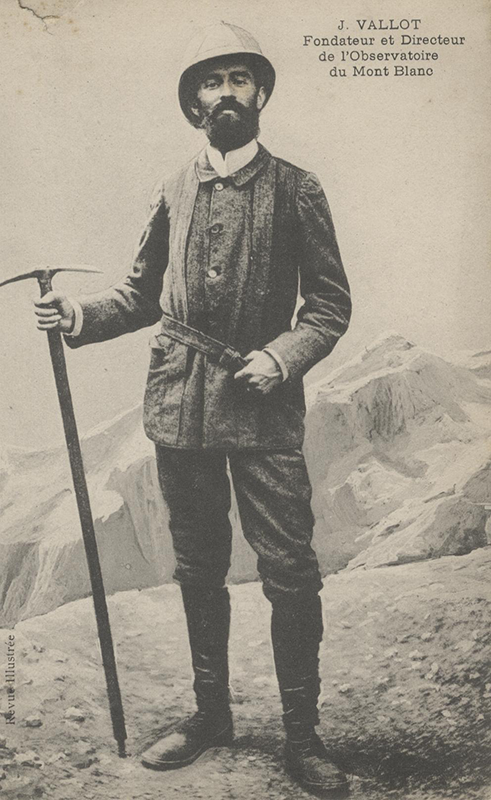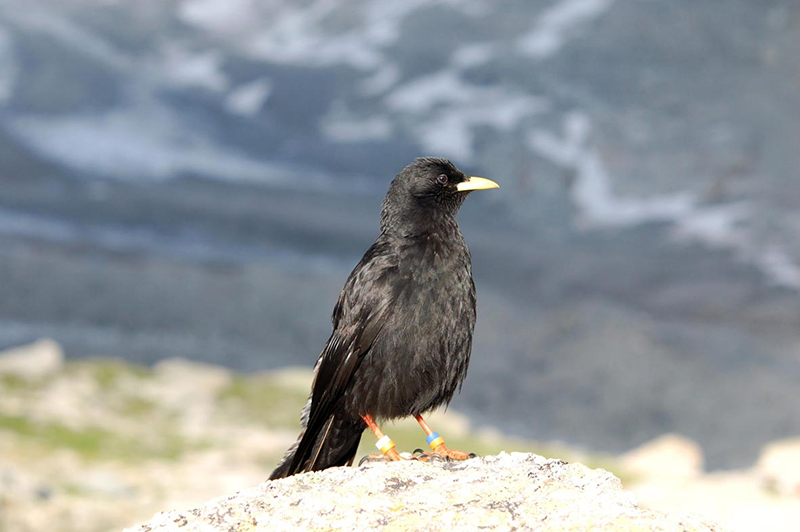
CREA founder, Anne Delestrade in her favorite fieldwork site, the Jardin de Talèfe © CREA Mont-Blanc

Joseph Vallot, Founder of the Mont Blanc Observatory © Musée Alpin de Chamonix
The legacy of the Mont Blanc Observatory
The story of CREA Mont-Blanc actually begins several hundred years ago. Since early 18th century, doctors, astronomers, geophysicists, botanists, meteorologists, ecologists, glaciologists and climatologists have been coming to Mont Blanc to carry out experiments and test new theories and equipment. And the story of the conquest of Mont Blanc is in itself a quest for scientific discovery. The first mountaineers seeking to reach the summit of the Alps’ highest peak carried equipment to take measurements and try to understand this uncharted territory and misunderstood environment.
In 1881, nearly one hundred years after the first ascension of Mont Blanc, Joseph Vallot, a jack of all scientific trades, reached the summit himself. Truly impressed by the massif, he decided to build two observatories: one, the Observatoire Vallot, high on the shoulder of Mont Blanc, and another in Chamonix, the Mont Blanc Observatory, to serve as a base camp for visiting scientists of all disciplines wishing to visit Mont Blanc. When Vallot left the Observatory to the State in his will, he ensured that it would become a symbol of the history of scientific discovery in the massif. Since then, it has housed the Paris Observatory, the French National Center for Scientific Research (CNRS) and today, the Research Center for Alpine Ecosystems (CREA Mont-Blanc).
An innovative idea: CREA Mont-Blanc
Many years later, in 1988, a young Anne Delestrade found herself at the refuge de Couvercle in the heart of the Mont Blanc massif doing field work for her PhD studying the Alpine chough. Although she’d grown up in Paris, she had spent school vacations with her family in Montroc, a stone’s throw from Chamonix. She had fallen in love with the mountains and decided to dedicate her work to trying to understand the often overlooked ecosystems flanking the impressive peaks around her. Knowing she wouldn’t be happy shut in a scientific lab in a city, she decided to base her work out of Montroc and spend as much time as possible studying her subject in its natural habitat. Fascinated by what she learned, Anne was determined to share it with others, which led to her founding CREA Mont-Blanc in 1996 with the dual missions of carrying out rigorous scientific research and involving the public in understanding and engaging with the environment.

The Alpine chough, seen here tagged for long term monitoring, was the first species studied by CREA Mont-Blanc © CREA Mont-Blanc
“I’ve always been curious about and amazed by mountain ecosystems, but the reality is that most people don’t really perceive even half of the things going on in the mountains. One of my goals is to help them truly see and understand what is going on in front of them—I’m sure that once they do, they’ll be as amazed as me!”
In 2002, after working on a volunteer basis and basing the NGO out of her own bedroom for six years, Anne was finally able to move CREA Mont-Blanc into the Mont Blanc Observatory and hire her first employee. Together, they began leading their first scientific trips into the mountains with school children from the Chamonix Valley. From those initial trips was born the idea to initiate a citizen science program and since 2004, CREA Mont-Blanc has been running the Phenoclim program, inviting citizens to contribute phenological observations of particular species across the Alps. Through their participation in Phenoclim, Anne believes that people will begin to see the effects of climate change with their own eyes.
In addition to participating in innovative collaborations with her scientific partners, Anne is passionate about unlocking science and sharing with others, a conviction which is guiding CREA Mont-Blanc’s current development of scientific volunteer trips. Like Joseph Vallot, over a century before her, Anne wants to establish CREA Mont-Blanc and the Mont Blanc Observatory as a true base camp for scientific discovery. Since its creation over 20 years ago, CREA Mont-Blanc has grown in scale, but has not lost sight of their mission which was inspired by those that came before: to explore, to amaze and to educate.
